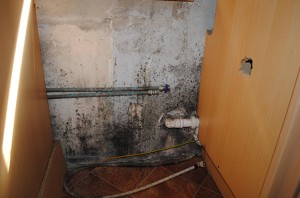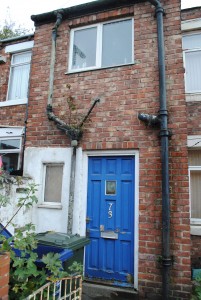Condensation Damp
Gen Damp have worked with many local authorities and housing associations to help combat condensation problems in properties. The condensation problem is on the increase because of increased standards of insulation, double glazing and draught proofing making properties more airtight and this results in moisture laden air being trapped within the property.
Condensation is by far the most common form of dampness found in buildings and dwellings throughout the UK. It is often misdiagnosed by some experts as other forms of dampness, it can often lead to moulds and mildew forming on decorative surfaces.

Gen Damp have specialist surveyors trained in the diagnosis and control of condensation. Our experts can offer advice to clients on condensation issues and the range of solutions available. The range includes:
• Positive input ventilation systems
• Passyfier air vents
• Insulated dry lining systems
• Insulated dry lining systems
What is condensation damp and its causes?
Condensation is caused through a lack of adequate heating and ventilation within the property. When warm moisture laden air meets cooler air or a cold surface the air is unable to retain the moisture and water molecules are released in the form of condensation. This is particularly visible on surfaces such as walls, windows and toilet cisterns where it can lead to further damp problems within the property.
Relative Humidity
The actual amount of water vapour retained in the air at a given temperature expressed as a percentage of the maximum amount of water vapour that can be retained at the same temperature.
Dew Point
The Temperature at which 100% relative humidity is reached, i.e., at which point condensation will start to occur in a room.
Surface Condensation
Surface condensation is formed when moisture laden air comes into contact with a cold surface. As cold air cannot retain as much water vapour as warm air, as the air cools the relative humidity increases until at the dew point temperature it reaches 100% relative humidity and water starts to condense out of the air and forms as condensation on the cold surface. This moisture is not structural it is formed by lifestyle. Therefore in order to control condensation it is necessary to control the heating and ventilation within the property to prevent water vapour reaching the dew point.
Condensation is noticeable and easy to spot on non-absorbent surfaces fro example windows or tiles. On more absorbent surfaces it may go unnoticed until mould growth or damage to decorative surfaces occurs. The mould growth is normally associated with a musty smell. It is usually at this stage where advice on controlling condensation is sought.
There are a few simple measures to help control condensation levels within property:
- Improve heating, ventilation and insulation within the property
- Prevent excess moisture in the air spreading, for example close bathroom and kitchen doors when these areas are in use
- Avoid using portable LPG or paraffin fuelled heaters. These types of heaters are the cause of condensation in properties
Penetrating Damp
Penetrating damp is classed as any water that finds its way inside the fabric of a building from the outside. It can occur at all levels of the building from the chimney stack down to the cellar. Overflowing gutters, missing roof tiles chimney stacks, downspouts, leaking pipes, badly fitted windows and doors, damaged pointing, cladding, flashing or render are all sources of penetrating damp.
If air bricks are covered that too can cause problems because it prevents the building from breathing by restricting the flow of air and trapping moisture which in turn leads to damp and rot.
Symptoms:
You’d think it would be fairly easy to locate the ingress of water into your home but the problem is that it can be weeks, months or even years before any problems appear internally. Typical signs of penetrating damp are:
- Growing patches of damp on walls or ceilings
- Wet and crumbling plaster
- Signs of spores or mildew
- Drips and puddles
- Peeling wallpapers
The key is to eliminate the moisture at source, alas this is not as easy as it sounds and professional advice should always be sought.








